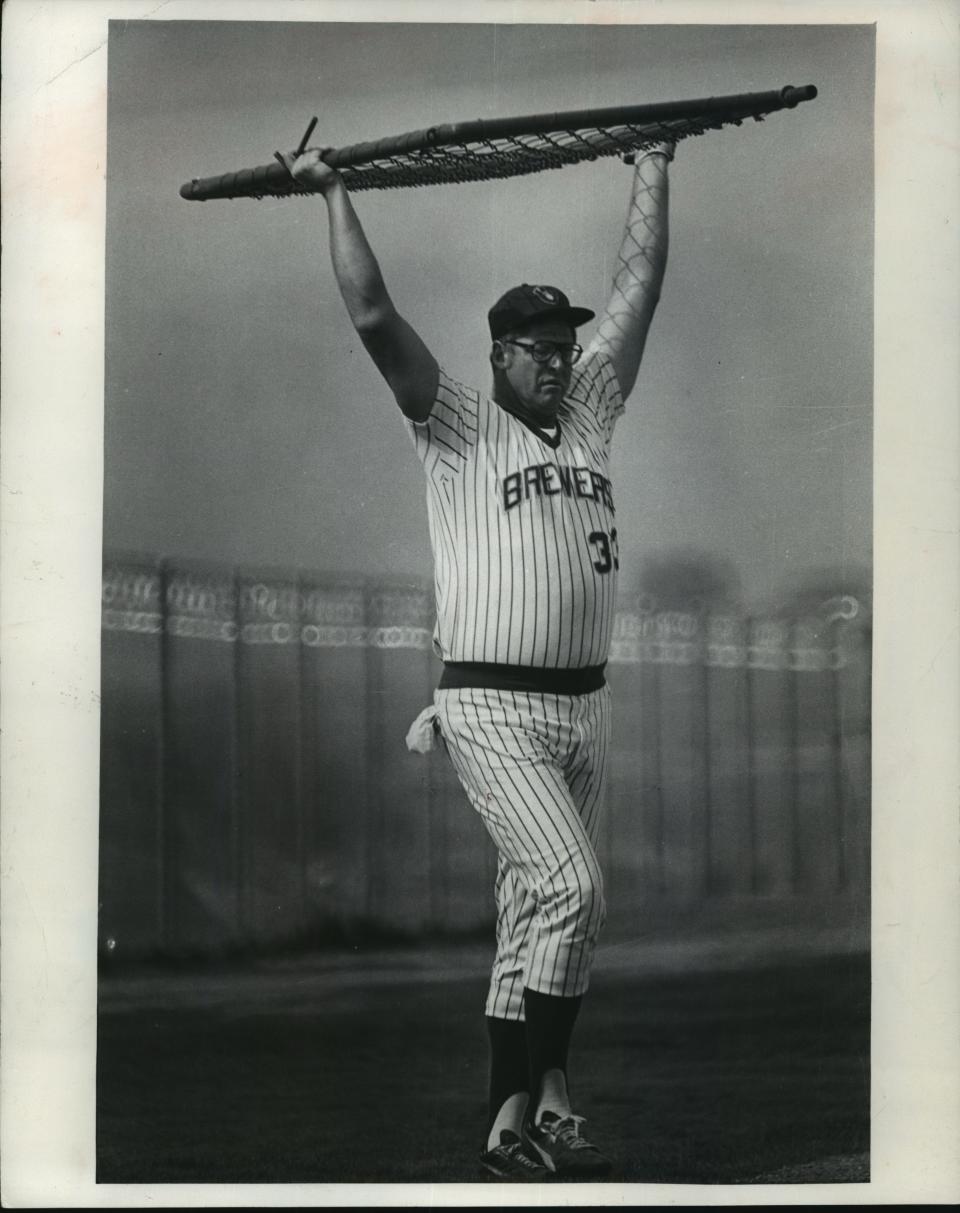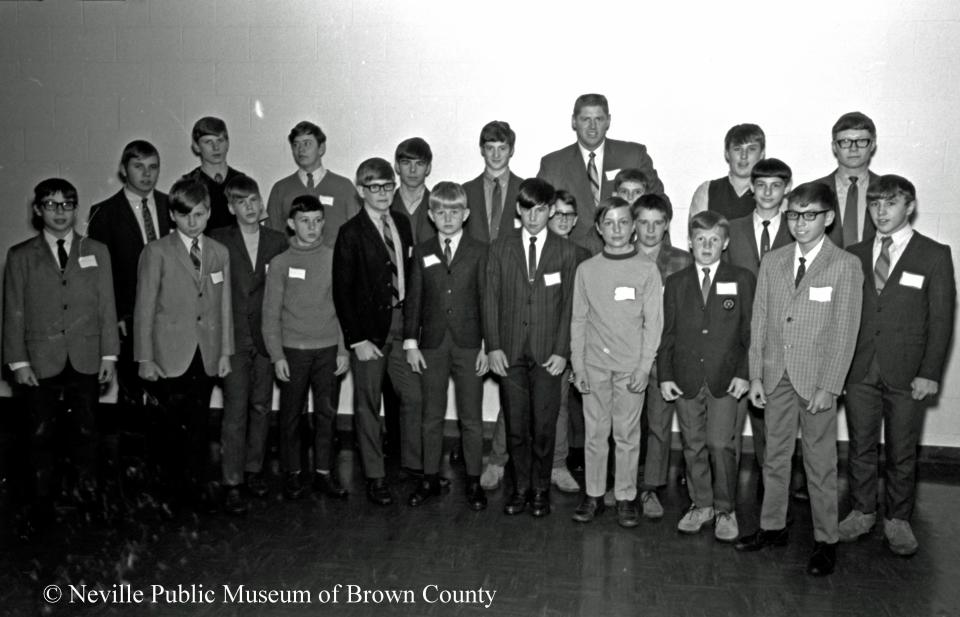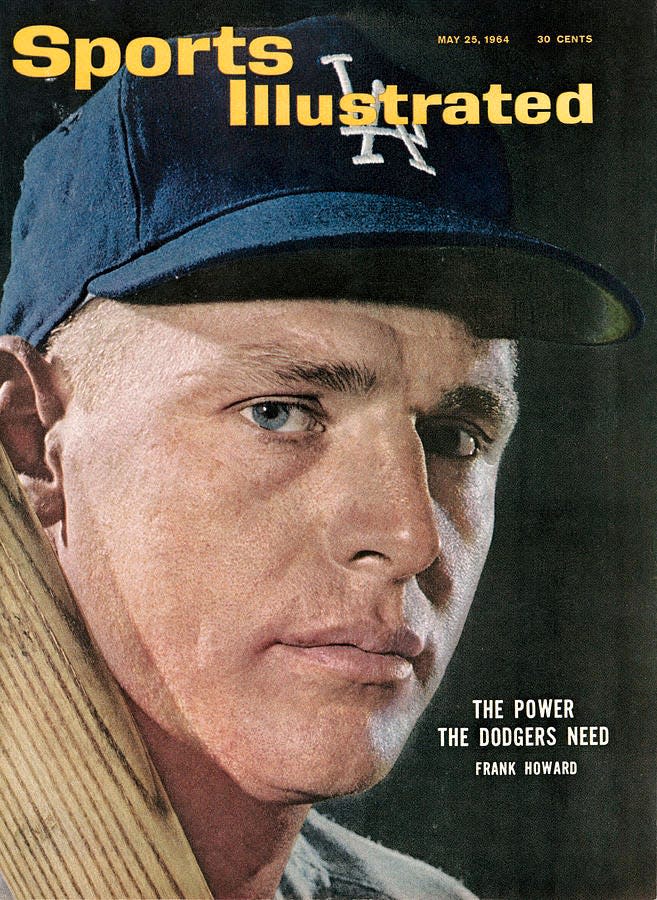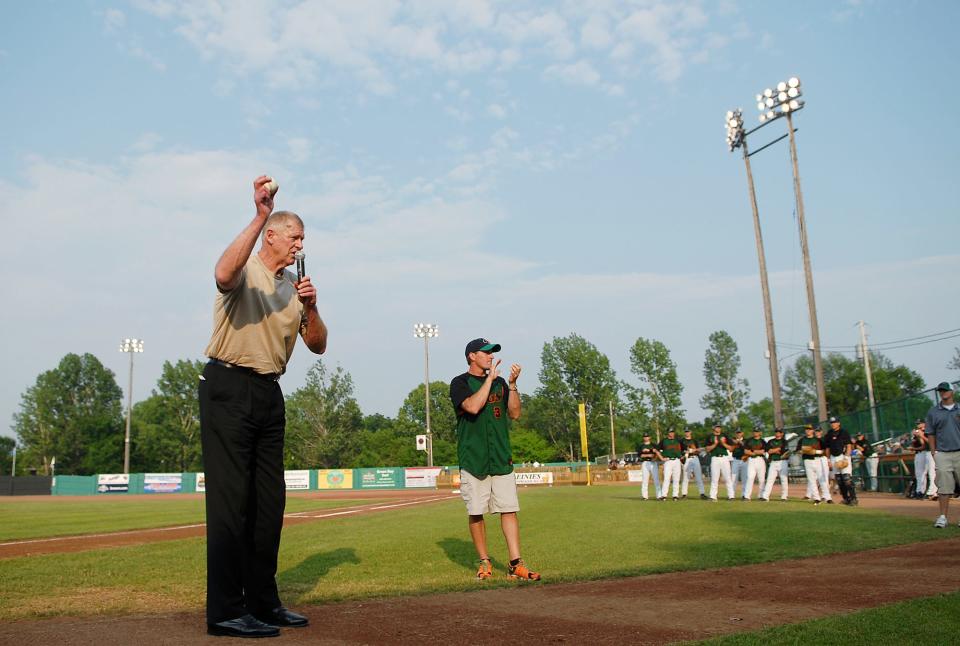MLB star Frank Howard lived in Green Bay for decades and spent two coaching stints with the Milwaukee Brewers

Frank Howard, the behemoth slugger known for his playing days with the Washington Senators and Los Angeles Dodgers, died at age 87 Monday near his home in Virginia. Though he never played for a Milwaukee major-league franchise, his roots in Wisconsin ran deep, including more than three decades as a Green Bay-area resident and two coaching stints with the Milwaukee Brewers.
Howard, who at 6-foot-7 was a giant in his era, made four all-star teams and hit 382 home runs (many of considerable distance) during his 16 years of playing. He was the 1960 Rookie of the Year, twice led the league in homers and won a championship with the Dodgers in 1963, though his career might have ended there were it not for the vice president of a cardboard box manufacturer in Green Bay — more on that in a minute.
Howard pre-dated the arrival of George Bamberger in the Brewers organization but served during both of Bamberger's stints as Brewers manager, and Howard took over as manager of the New York Mets for 116 games in 1983 when Bamberger stepped aside from that job, as well.

Howard was a multisport phenom at Ohio State University and was drafted to play basketball, not baseball, by the Philadelphia Warriors in 1958. But he chose to sign with the newly relocated Dodgers instead, and he was assigned to the Green Bay Bluejays of the Illinois-Indiana-Iowa League, where he hit 37 home runs in his first season of organized ball and finished the year earning a brief appearance in Los Angeles with the parent club.
While in Green Bay, Howard met his first wife, Carol, an employee of the Green Bay Press-Gazette, and wound up buying a house. He lived in Green Bay during the offseasons until the late 1980s when he relocated to Virginia. He raised six children in Green Bay, and his MLB exploits were followed regularly in the Green Bay Press-Gazette. He even owned shopping centers in the area.
After the 1963 season, when Howard was considering walking away from the baseball, he was convinced to give it another shot by George Mackin, the vice president of the Green Bay Packaging Company, where Howard was a sales trainee.
Two years later, Howard was traded to Washington and became one of the city's most beloved athletes. He finished playing in 1973, and the Brewers hired Howard to manage their Class AAA farm affiliate in Spokane, Washington, in 1976.
Howard, with nicknames such as "Hondo" (after a John Wayne character), "Gentle Giant," "The Monster" and anything else that called attention to his massive stature, was only 39 years old at the time. He wore a size 54 shirt, 46 pants and 14D shoe. More than two decades after he left the Brewers, clubhouse manager Tony Migliaccio said Howard's measurements were the only uniform requirements he had seen that rivaled what was needed for Brewers newcomer CC Sabathia in 2008.
Milwaukee Journal sports writer Mike Gonring wrote during the 1976 spring training, "If Sir Edmund Hillery had seen Howard, he probably would have stuck a piton in him and tried to climb."
"The first day, he was yelling instructions at us and the stadium was shaking," Gonring quoted one player as saying.
In 1977, Howard was promoted to the Major-League first base coach on manager Alex Grammas' staff. He worked primarily with outfielders and was given a chance to mentor players such as Sixto Lezcano, Robin Yount and Charlie Moore, then later Paul Molitor and Gorman Thomas. His fiercely struck ground balls to Yount during workouts, "blister balls," became the stuff of legend.

More: Wisconsin-connected athletes that have been on cover of Sports Illustrated
"You've got to keep doing things until they are second nature," Howard said. "You have to adjust. You've got to do your homework. You don't have to be a Rhodes Scholar to play this game, but you have to be smart enough to want to learn. That 110% stuff you hear about is a lot of bull. No one does that. Just give me a guy who plays up to his capabilities day in and day out … That's what Charlie and Robin are learning and have learned."
He was still under contract and retained in 1977 when Grammas was fired and Bamberger was brought on board, a step that led the Brewers to an immediate turnaround and a 93-win season in 1978. Howard was popular enough that players and fans advocated for Howard to become the new manager; even ousted general manager Jim Baumer said he'd be the right choice. But Harry Dalton was hired as new GM after the 1977 season and didn't see Howard as a candidate.

Howard left the Brewers in 1980 to become manager for the San Diego Padres, a stint that lasted only one strike-shortened season before he was fired again. He joined Bamberger's staff in 1982 with the Mets, then took over as interim manager in 1983, then followed Bamberger to Milwaukee in 1984, this time as hitting coach. He stayed for two seasons but was fired after 1986, then became the Seattle Mariners first-base coach.
Heading into the 1986 season, Howard's locker happened to be adjacent to a gas heater that exploded in the new Brewers clubhouse during spring training, an incident that didn't kill anybody but left several Brewers personnel with injuries. That included coach Tony Muser, who needed emergency medical care for his burns and missed the 1986 season. Howard, initially feared to be lost in the rubble, had gone out to the field for early work and was unharmed.
This article originally appeared on Milwaukee Journal Sentinel: Frank Howard dies; MLB star coached Brewers and lived in Green Bay

